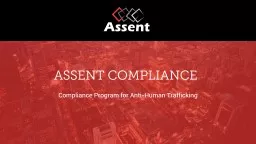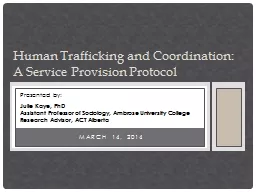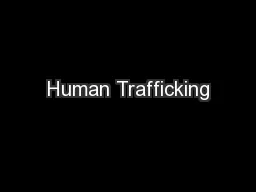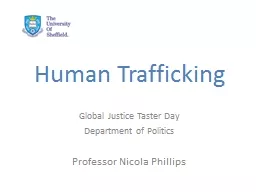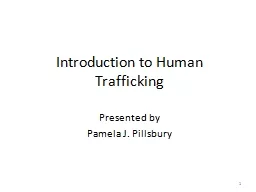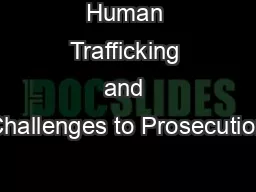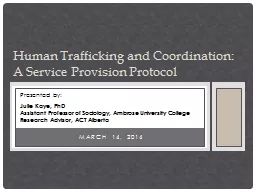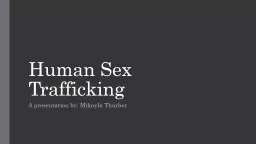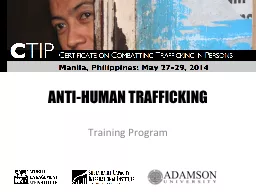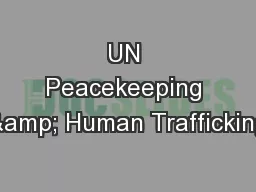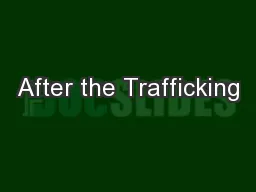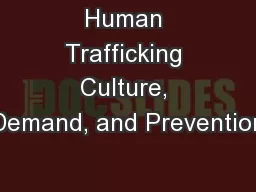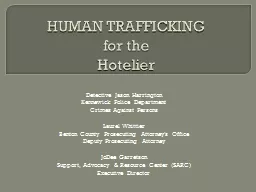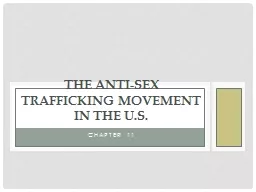PPT-Compliance Program for Anti-Human Trafficking
Author : tawny-fly | Published Date : 2017-09-19
Conflict Mineral amp Ethical Sourcing Workshop 2015 Todays Presenter James Calder Director Compliance Programs Assent Compliance Over ten years as a senior expert
Presentation Embed Code
Download Presentation
Download Presentation The PPT/PDF document "Compliance Program for Anti-Human Traffi..." is the property of its rightful owner. Permission is granted to download and print the materials on this website for personal, non-commercial use only, and to display it on your personal computer provided you do not modify the materials and that you retain all copyright notices contained in the materials. By downloading content from our website, you accept the terms of this agreement.
Compliance Program for Anti-Human Trafficking: Transcript
Download Rules Of Document
"Compliance Program for Anti-Human Trafficking"The content belongs to its owner. You may download and print it for personal use, without modification, and keep all copyright notices. By downloading, you agree to these terms.
Related Documents

